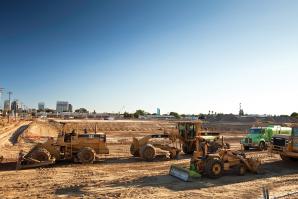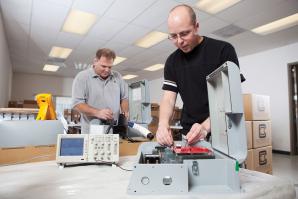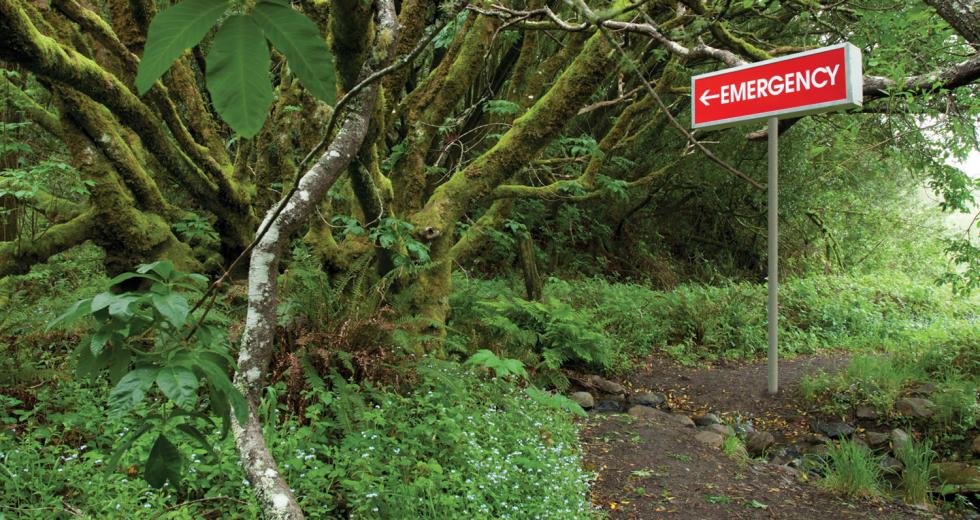In November, after seven years of work, the U.S. Green Building Council passed construction guidelines for health care facilities. Some local building experts say it’s too early to tell what this means for Capital Region architects and builders; others say it’s too much too late for the region.
Although the council passed the guidelines months ago for its Leadership in Energy and Environmental Design certification, staff is still working out the kinks, such as setting up an online registration system for projects. Until it’s up and running — expected any day now — new health care projects will continue to register under the new construction, or NC, designation, as opposed to the health care, or HC, designation.
“I really don’t have a crystal ball for LEED for health care,” says Carla Dhillon, a sustainability specialist for architecture firm Lionakis. “I think the market would be more interested in sustainable buildings. I just don’t know if they’ll be using LEED for health care as a metric.”
LEED-HC takes into account acute medical facilities, which need around-the-clock energy use: inpatient facilities, federal hospitals and assisted-care facilities, to name a few. It addresses design and construction for both new buildings and major renovations of existing buildings. Here in the Capital Region, the major health care providers are all undergoing expansions or embarking on new projects already in the pipeline.
“Especially in this region, if you look at the major health care providers, all the major players have had these major construction projects that are close to wrapping up in the next few years,” says Don McAllister, health care market lead for Lionakis. “We have not seen health care projects move toward LEED registration or certification like other markets. … I kind of wish LEED (for health care) was 10 years earlier.”
Although many projects are under way in the Capital Region, market research suggests opportunity. Health care accounted for an estimated 14 percent of nonresidential construction starts in the U.S. last year, according to McGraw-Hill Construction Research and Analytics. What’s more, the sector has seen the largest growth in green building the past two years with at least 35 percent of projects in the pipeline identified as “green projects.” This estimated $8 billion to $9 billion in projects nationwide are more than double the value of projects in 2008, according to McGraw-Hill.
Some building experts say one hurdle to breaking the green barrier in health care is the medical community’s priorities and distractions elsewhere, including the continued federal health reform debate and bottom-line issues such as reimbursements or cost-cutting measures.
Employee costs are the largest expense for a hospital, McAllister says, and many hospital executives are focused on saving money through staff efficiency, where there’s “a giant return.” At the same time, McAllister says, “every one of our clients is pushing the reduction of energy consumption.”
“Energy savings are not as profound as other savings or investments in other areas of the hospital,” says Bill Whipple, senior associate and medical facilities planner with HGA, an architecture, engineering and planning firm in Roseville.
If there are savings in energy bills, it’s more likely to come from new construction than retrofits of existing buildings, says Scott Shannon, health care director at Dreyfuss and Blackford Architects. “That’s our challenge,” he says. “Most (local) health care work is going to be renovation. There are already enough beds out there.”
Although LEED for health care was designed with the needs of acute-care facilities in mind, it may also be used for medical offices, medical education and research centers. When LEED for health care does surface in the Capital Region, Shannon says, it could come in the form of new construction for specialized treatment and surgery centers that target aging Americans. Lionakis’ McAllister says medical office buildings and research centers could be the first to push for LEED-HC certification — when it happens.
Health care accounted for an estimated 14 percent of nonresidential construction starts last year.”
McGraw-Hill Construction Research and Analytics
“It’s been so long in the making … that some of LEED for health care has waned in popularity,” Whipple says. “It was a very popular subject four or five years ago, and I think if LEED for health care had come out then it may have caught hold stronger than having come out now.”
Still, many local institutional, commercial and residential projects have already embraced sustainable design because it’s expected.
“Good design is green design now,” says Kimberly Anderson, executive director of the American Institute of Architects, Central Valley Chapter. “When you design a building now, sustainability is just part of that design.”
Many local health care providers already have projects registered with the U.S. Green Building Council under the umbrella of new construction and not specifically under the designation of health care. Others have long-practiced their own sustainability standards.
Practice Greenhealth, a member organization of 1,100 hospitals dedicated to sustainability, each year announces its Environmental Leadership Circle for hospital systems with “very substantial and progressive work around sustainability.” Of the eight winners in 2011, two have significant footprints in Northern California: Kaiser Permanente and Catholic Healthcare West, which operates Mercy hospitals.
The University of California system requires all new facilities to achieve a minimum LEED silver designation, says Tom Rush, manager of Facilities Design and Construction for UC Davis Medical Center. New UC Davis medical facilities built under LEED-NC guidelines include its Cancer Center expansion, Telehealth Resource Center and new parking structure. Sustainability has long been a major focus for the UC system, he says, adding that all construction under his supervision exceeds Title 24 environmental quality requirements by at least 25 percent.
But applying LEED standards can be problematic because of a tangle of state and federal codes and regulations. During the LEED for health care process, committee members had to juggle a mind-boggling set of regulations, both federal and state, in creating the guidelines: environmental impact reports, the Clean Air Act, Clean Water Act, OSHA and the Health Insurance Portability and Accountability Act, among many others.
In California especially, the strict environmental quality regulations of Title 24 have produced two, sometimes conflicting, set of rules. Title 24, also known as the California Building Standards Code, establishes strict guidelines for construction that often exceed those of LEED. Yet because of Title 24’s strict environmental rules, some building planners say that Title 24 prevents building designers from achieving efficiency standards.
“When I want to reduce the mechanical load of a hospital I still have to maintain these (regulatory) standards,” Whipple says.
Shannon uses filtered-air requirements as an example. “You can meet the (Title 24) requirements, but the energy efficiency is not achieved,” Shannon says. “We’re expending much more power and energy than we would like to see for a LEED project.”
That’s where the differences in green guidelines differ for new construction versus health care. The health care guidelines specifically address patient outcomes. For example, the council has modified indoor air-quality credits to align the needs for infection control and protecting patients with strict ventilation codes outlined in green building strategies.
Health care facilities meeting certain criteria will be required to register under LEED-HC when it fully launches this year. These include licensed-bed facilities and federal hospitals, among others. Projects already under way are grandfathered into the guidelines for new construction.
“The mission of health care is first: Do no harm,” says Steve Guttman, former chair for the council’s LEED for Healthcare Core Committee and a major player in green building design.
Although LEED for health care is new within the LEED family, 120 health care projects have previously received green building certification under LEED guidelines. The USGBC has five more LEED adaptations in process: LEED for data centers; LEED for hospitality; LEED for warehouse and distribution centers; LEED for existing schools and LEED for existing retail.
Recommended For You

Walk the Green Line
Transit-friendly development connects people, work and play
Thousands of Sacramentans soon can walk out their front doors and take a few steps to the American River Parkway, to light-rail, to shops and restaurants and maybe even to their workplaces.

Power Brokers
Clean tech thrives in the Capital Region
Beutler Air Conditioning and Plumbing may be a poster-business for the rise and fall — and re-birth — of Sacramento’s economy. Rick Wylie, president of Beutler, says the 65-year-old Sacramento company was probably saved by its diversification, partially into green energy models.



